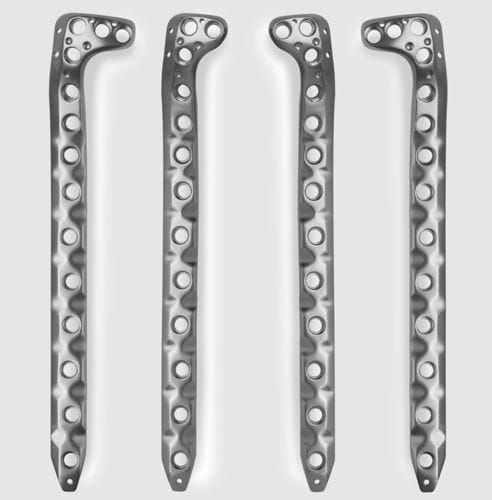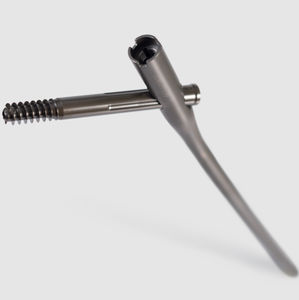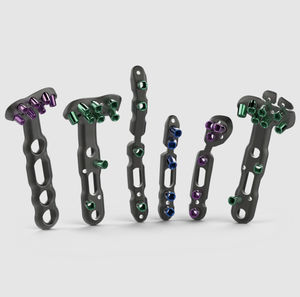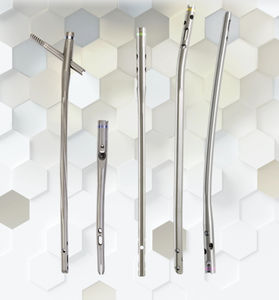

- Products
- Catalogs
- News & Trends
- Exhibitions
Tibia compression plate NCB®proximallockingmetallic
Add to favorites
Compare this product
Characteristics
- Applications
- tibia
- Part of bone
- proximal
- Locking
- locking
- Materials
- metallic
- Length
92 mm, 132 mm, 172 mm, 212 mm, 292 mm
(3.6 in, 5.2 in, 6.8 in, 8.3 in, 11.5 in)- Number of holes
3 unit, 5 unit, 7 unit, 9 unit, 13 unit
Description
The NCB Proximal Tibia Plating System is an innovative solution for complex fractures of the proximal tibia. This locking plate system offers surgeons expanded options in trauma surgery, providing precise targeting of cortical and cancellous screws with polyaxial freedom.
Features
Screw Features
The system allows for polyaxial screw placement (30°) with subsequent screw locking. Before locking, the screws can act as lag screws and be used for fracture reduction; a benefit which is not offered with standard locking systems.
Anatomically Designed
Anatomically-contoured plate with asymmetrical plate cross-section to facilitate anterolateral soft tissue coverage; plate head has 6° posterior tilt to match lateral tibial contour.
MIS Technique
The MIS Guides allow for percutaneous targeting of screws and, thus, smaller incisions. The radiolucent guides permit insertion of plates sub-muscularly to help avoid stripping and damage to soft tissues.
Polyaxial Screw Choices
The NBC Screw is secured with a locking cap that permits a range of 0°-15° off-center, or a 30° cone of polyaxiality. Cortical and cancellous screws can be used in traditional methods - lagging fragments or preventing rotation. These screws can be locked immediately after insertion, after other screws have been inserted, or not at all. With the ability to lock the construct after all screws have been inserted, screw directions can be adjusted intraoperatively without having to "unlock" the construct. Because the locking cap is not inserted with power equipment, the risk of cold-welding and cross-threading is minimised.
Catalogs
Trauma Solutions
10 Pages
Exhibitions
Meet this supplier at the following exhibition(s):

Related Searches
- Bone plate
- Compression plate
- Metallic compression plate
- Locking compression plate
- Titanium compression plate
- Distal compression plate
- Agitator
- Proximal compression plate
- Benchtop stirrer
- Forearm compression plate
- Arthrodesis nail
- Tibia compression plate
- Bone substitute
- Femoral stem
- Metallic intramedullary nail
- Radius compression plate
- Blender
- Non-locking compression plate
- Proximal fixation intramedullary nail
- Knee prosthesis
*Prices are pre-tax. They exclude delivery charges and customs duties and do not include additional charges for installation or activation options. Prices are indicative only and may vary by country, with changes to the cost of raw materials and exchange rates.






